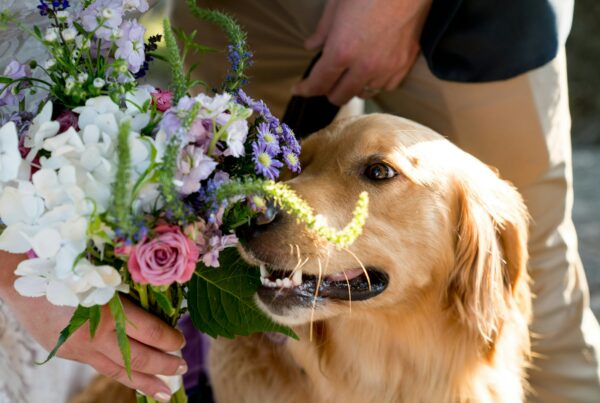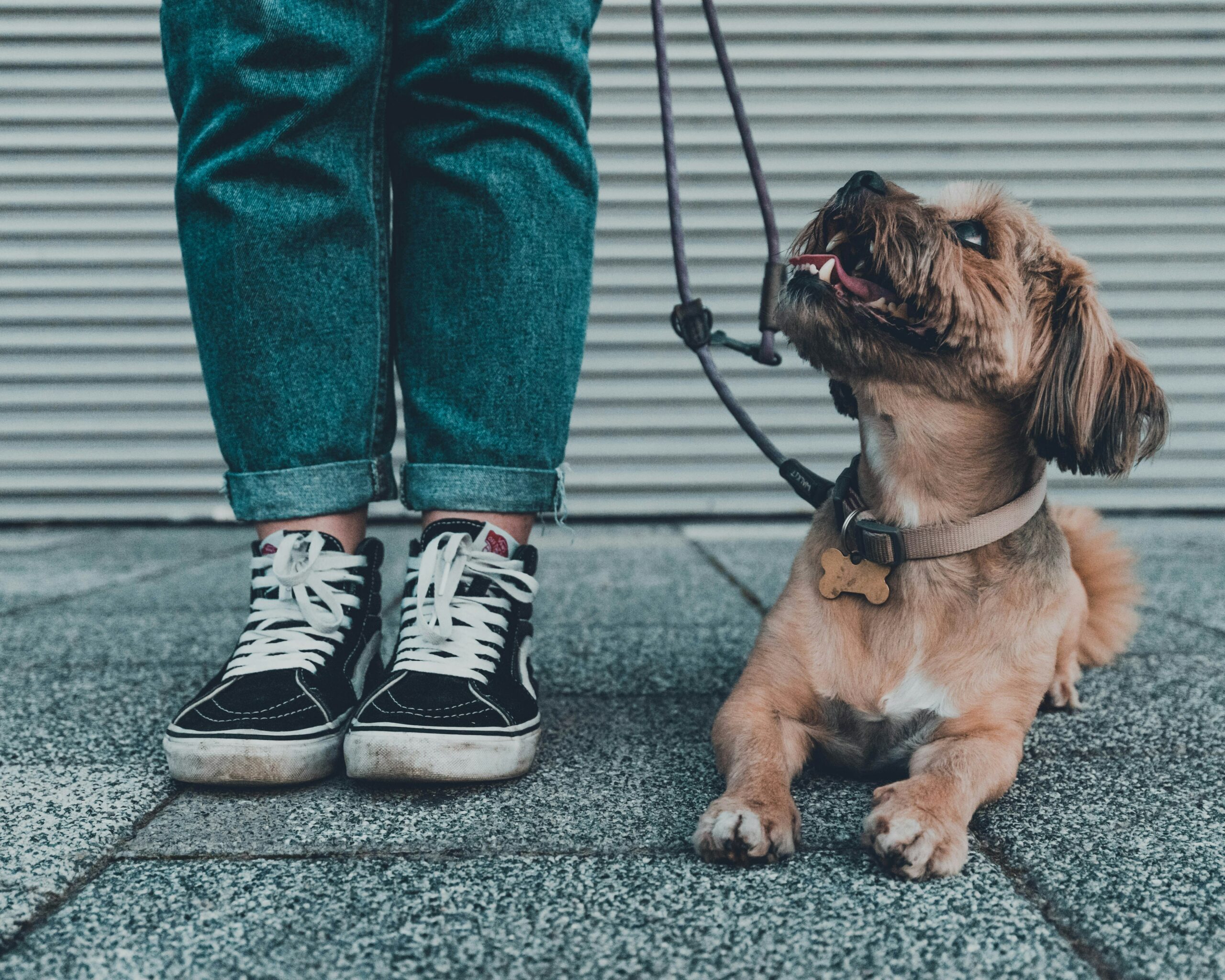Anxiety and fear can significantly affect your pet’s quality of life. Not only can it be emotionally taxing, but it can also lead to physical consequences due to a lack of exercise and playtime. Anxiety can stem from various causes, such as poor socialization, separation, aging, loneliness, or even genetics. In addition, the stress can be terrible if you move from a small town to a big one. That said, no matter what it is, you need to address these issues accordingly to help your furry companion feel secure again. You can use many methods to help your pet cope with their anxiety, but first, you need to understand why it’s happening in the first place. To help you do this, today we will discuss how to deal with an anxious dog in a big city.
1. Understand the Symptoms of Anxiety
Anxiety in your dog may manifest in several different ways. Dogs with anxiety issues may exhibit reactive behaviors, such as acting erratically when exposed to other animals or humans or when confronted with threatening stimuli. That is something you should keep in mind from the time they are puppies through their senior years. That said, anxiety is a common problem for reactive animals. Anxious animals may exhibit any combination of the following behaviors:
- Aggression
- Urinating or defecating in the home
- Panting or pacing excessively
- Destructive behavior like chewing furniture
- Excessive barking or whining
- Shivering and shaking
If your pet experiences any of these symptoms, it might harm their quality of life and health. You can treat your pet’s anxiety with calming techniques, pharmaceuticals, behavior modification, and other methods. Please contact us if you are interested in a consultation on your dog’s behavior.
2. Identifying Triggers in the Urban Environment
Identifying triggers of anxiety in dogs can be a difficult challenge to overcome, especially in urban environments. Dogs living in cities tend to experience greater levels of environmental stress due to the increase in noise and human traffic, as well as additional distractions like bright lights, cars passing by, and buses. Additionally, these animals are exposed to multiple stimuli that can cause them distress, such as other pets or people.
By understanding your pet’s triggers, you can better tailor their walks to minimize potential threats and help them stay relaxed during their outings. Try to change your dog’s experiences by gradually exposing them to the elements they fear the most. You can accomplish this by using creative techniques such as providing treats or playing games during walks. Also, keep an eye on their behavior so that you can intervene and calm them down if a trigger occurs. Finally, you can help your furry friend enjoy walking around town again by being patient and consistent.
3. Techniques for Calming an Anxious Dog
Sometimes it can be tricky to deal with an anxious dog, but there are several techniques you can use to help soothe and reassure them. The first is to provide a safe and comfortable area for them; make sure the environment is quiet and distraction-free so your pup can relax. For instance, the experts at vanexpressnj.com recommend that people moving with their dogs try to create a calming atmosphere before the move. That can be as simple as playing soothing music or reading aloud to establish your presence better. You can incorporate this into your pre-walk ritual to prepare for your walks.
Additionally, providing physical comfort in the form of treats or petting can go a long way in offering reassurance – this will allow them to feel comforted and more relaxed during their outings. Finally, positive reinforcement is vital. Even if your dog doesn’t respond well during one walk, praise them for being brave and reward them with a treat afterward. Eventually, they’ll learn that walks don’t have to be stressful. With these simple steps in place, it won’t be long until your pet feels better equipped to handle their anxiety and enjoy their daily strolls!
4. Creating a Safe Space
Creating a safe space for your pet at home and on the go is vital in helping them feel more relaxed in situations that may cause anxiety. At home, create an area for your dog to relax, such as a quiet corner or a bed, where they can escape when stressed. Make sure that this area is free of loud noises and distractions to reduce their stress levels. Preferably, this would also be the area where the dog eats. Likewise, when out on walks, you can help keep your dog calm by avoiding busy regions – if you know where they experience a higher level of fear, then plan your route around those places instead.
Additionally, be aware of other people and animals nearby. Encounters like these can also act as triggers for anxiety. Finally, carry the treats or toys with you to help distract your dog in case of anxiety. By taking these steps and creating a secure environment for them both at home and on the go, you will help alleviate any anxiety and allow them to enjoy their time outside!
5. Managing Anxiety During Travel and New Experiences
Traveling and exploring new places can be an exciting experience for you and your pup; however, it’s essential to ensure that their stress levels are managed during these experiences. First, try to take your pet’s anxiety into account when packing for a trip or traveling during relocation – take good care of them in the car or on the plane. That includes things such as bringing a dog bed or blanket from home. Lastly, be patient and slow down with your dog as you explore new areas; this will give them time to take in everything around them and rest if needed. Finally, prepare your pet for the trip; they will have as much fun as you.
6. The Benefits of Exercise and Routine for Anxious Dogs
Dogs need regular exercise to maintain happy and healthy lives. That is especially true for anxious dogs. Exercise can help reduce stress levels due to the endorphins released during physical activity. For this reason, incorporating a daily walk as part of your dog’s routine will help keep their anxiety levels down. You need to do this no matter what. Additionally, sticking to a regular walking schedule gives pets something they can look forward to and use as an escape from stressful situations. That can be especially beneficial when working with a dog who experiences fear or has difficulty self-regulation. As we’ve mentioned, an established routine provides structure and predictability, allowing them to relax.
7. Balancing Anxiety and Independence
Another way to deal with an anxious dog is by gradually increasing the length and frequency of their walks or outdoor activities. Start with short walks in familiar areas and progressively introduce them to new neighborhoods or parks. The goal is to expose them to the outside world as much as possible to instill some sense of independence. Another good idea would be to enroll them in a doggy daycare or dog walking service. These services can give your dog opportunities for socialization and exercise while also giving you the peace of mind that they are being well taken care of. Make sure to do your research and choose a reputable service that has experience working with anxious dogs.
8. Seeking Professional Help
We all want to help our pups live better lives, but we need to accept that sometimes their happiness may just be out of our hands. That is why sometimes the best way to deal with an anxious dog is to seek help from someone qualified to handle behavioral issues. If your companion exhibits signs of extreme anxiety, such as aggression or destruction of property, it’s essential to consult a veterinarian or a professional animal trainer. A vet can diagnose any underlying physical conditions that could be causing stress. At the same time, an animal behaviorist may be better equipped to identify and work through more serious emotional issues. When seeking help from a pro, find someone who specializes in canine behavior – this will ensure that your pup gets the best care available.
Conclusion
Now that you know how to deal with an anxious dog in a big city, you can help your furry friend feel more comfortable and confident in their urban environment. By understanding the signs and triggers of anxiety, creating a safe and secure environment, and gradually exposing your dog to new experiences, you can help them build resilience and thrive in the city. Remember to be patient and consistent in your approach, and don’t hesitate to seek professional help if you need it
Photo credit:
https://www.pexels.com/photo/soft-focus-photo-of-dachshund-895259/
Love our content? Share it with a friend or link it to social media. Like short clips of cute household pets? Training tips? Follow us on instagram @nydognanny or on YouTube at nydognanny. Have some news you needs to get to dog and cat parents stat? Email info@newyorkdognanny.com with your article pitch.




